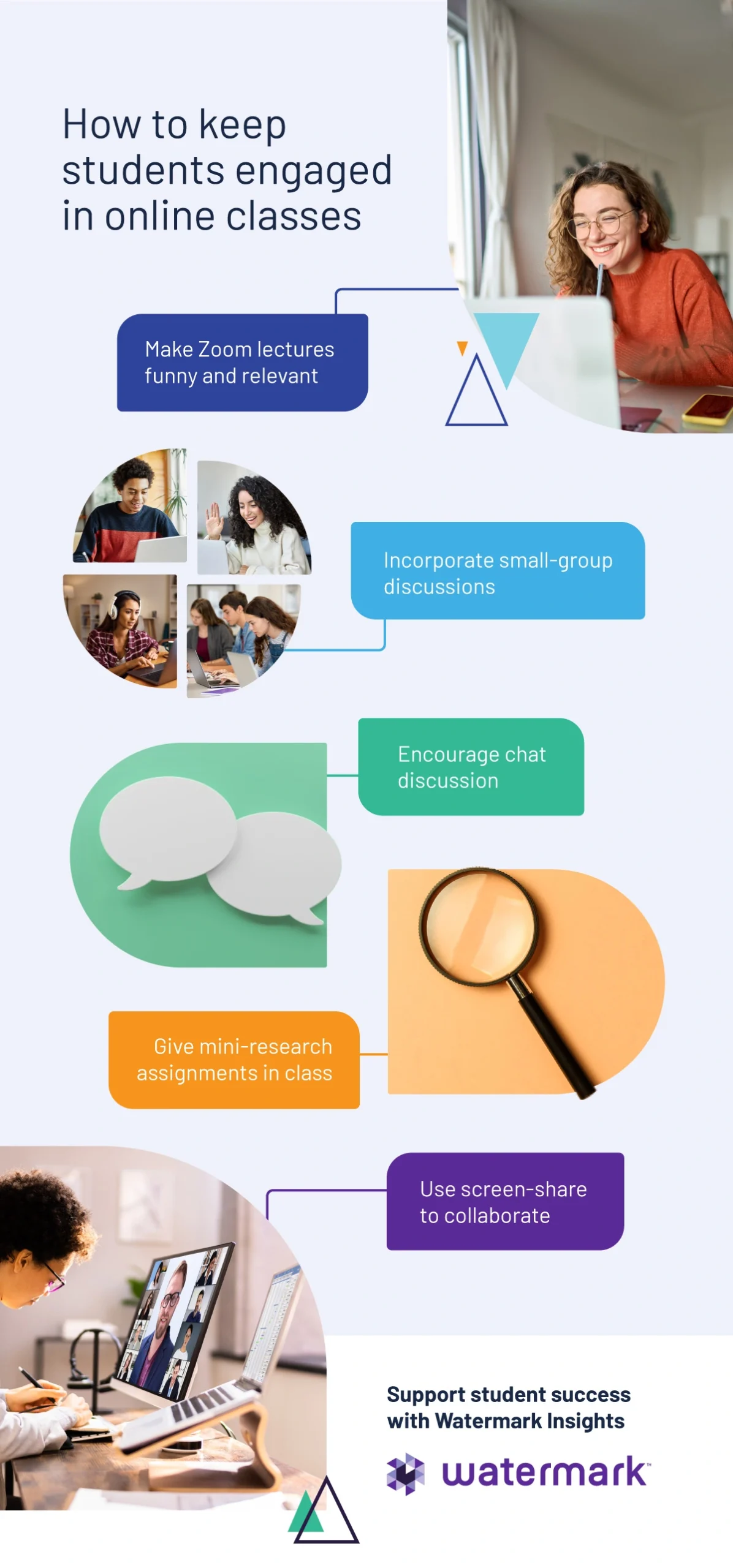



The pandemic thrust teachers and students online almost instantaneously. Sure, some had a degree of experience with online teaching and learning, but for many, the sudden shift presented challenges, to say the least.
A year later, higher education institutions have a better grasp of both the challenges online teaching and learning present and the best practices to overcome those hurdles and help students succeed.
Fall brings the promise of a further return to campus, but much like how working from home has permanently recalibrated the workplace, online learning has gained a larger foothold in higher education instruction.
The keys to student success online are not a suddenly-unlocked secret, but amid software hiccups, Zoom awkwardness, and the general trepidation of life upended, they are easy to overlook. Here are three tips to always keep in mind with online teaching:

No simple task, right? Even in the classroom, keeping students engaged is a challenge. But in the era of TikTok, technology affords a robust cabinet of tools.
Whether Blackboard, Canvas, or another option, classroom management tools help keep teachers and students organized and informed. Learn the ins and outs of your system, and give your students time to learn the features, too.
We all know video conferencing apps such as Zoom allow teachers to present lectures online. We all also know, thanks to the efforts of Stanford researchers and others, Zoom fatigue is real. Elevate your use of video conferencing by breaking groups out into smaller rooms.
“Lecturing for a whole class can be boring in person or online, but we risk losing the students even more online,” says Dr. Mary Kate Blake, a part-time professor at Valparaiso University. “Since moving online, I try to incorporate even more small group discussion and activities into my lessons than I have in-person. For instance, I may give them mini-research assignments in class where they have to look up how a social problem plays out in their own hometowns.”
Encourage classroom discussion on the chat feature as well. Typically quiet in the classroom, introverted students might thrive online through the use of chats and bulletin boards. “Some of my introverted students who would feel uncomfortable speaking in class have made great use of the Zoom chat,” Blake says. “Sometimes there could be a separate conversation about the material on the chat versus our verbal conversation, and it is very exciting to see students communicate with me and others this way.”
Screen-share technology also provides an excellent way to get students involved. Teachers can show exactly what they are doing on their own computers. The feature also allows students to share with their classmates their own work or questions.
Another option for teachers is to record themselves presenting a lecture and make that video available to view when students have time. But a word of caution against leaning on this asynchronous approach too heavily, because it risks losing the opportunity to promote inclusivity that synchronous learning affords.
Synchronous learning provides some helpful structure. And, as the Academy of Legal Studies in Business found over the course of online teaching during the pandemic, synchronous learning also “strengthens social support and class-wide relations, as it better simulates an in-person environment.”
Asynchronous learning certainly has its place, flexibility of course being No. 1. It also promotes reflection and engagement on discussion boards.
Still, strong social support fosters a more inclusive environment, which otherwise could be lost if students feel ostracized amid the technology and absent a classroom. The importance of inclusivity and equity in an online environment cannot be overstated.
“This study,” the Academy of Legal Studies in Business found, “confirms prior findings in previous smaller studies, which also found that students from at-risk demographic groups and introductory courses had lower performance in online courses compared to other students, thereby exacerbating the well-documented achievement gap in higher education.”
Implement a regular weekly schedule of virtual meetings, or at least embrace study-group breakouts based on the interests and schedules of individual students.
Outside curricula, student success software can help underserved colleges and universities keep at-risk students engaged, increase student retention, and optimize the chances of degree and certificate completion.
Good communication can’t be stressed enough. Start early. If class size allows, reach out to students individually so they can get to know you, even before the semester starts.
“Reach out to students outside of class time with a personalized email about their career plans, their major, the sports or clubs they are involved in or whatever else can make them know you are trying to get to know them,” Blake suggests. “This would be difficult in a larger class but in a smaller class could go a long way to building student investment in the topic.”
Be your “true self” when you write, because written content is so much a part of any online course. Whether lectures, assignment instructions, answers to questions or announcements, inject some warmth and humanity into what you write. Be friendly, caring, reassuring. Virtual learning is by definition impersonal. Our humanity expressed through how we write makes it less so.
Don’t leave students guessing. Set clear expectations for yourself and your students. Ensure your instructions are detailed and unambiguous. Provide rubrics and examples that flesh out precisely what the expectations are.
Once a novelty, online learning is now a part of the college experience. The pandemic expanded its value but also underscored its perils. But putting technology to creative use, instituting some structure and maintaining good communication can keep you and your students on the path to success.
This article was originally published in eCampus News on 7/2/2021.
eSchool Media Contributors
Courtney Doi, PMP, M.A., serves as Director of Professional Services for Aviso Retention. Prior to joining Aviso Retention, Courtney had many years experience teaching online and in person at community colleges, a private four-year college, and at the graduate level at a large public-research university. She graduated from the N.C. Community College Leadership program in 2015 and was Instructor of the Year for her college in 2018.






















































































































































































































































































































































































Submit this form to schedule a meeting with one of our reps to learn more about our solutions. If you need customer support instead, click here.